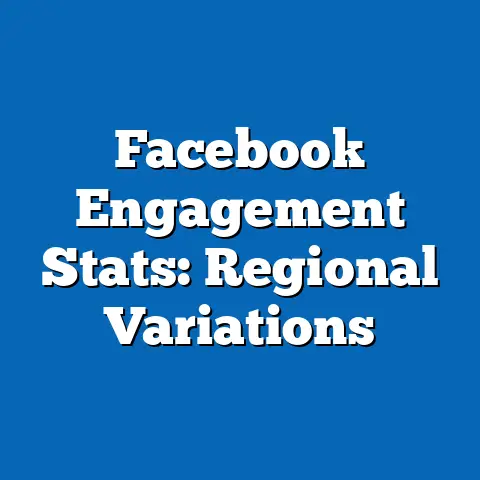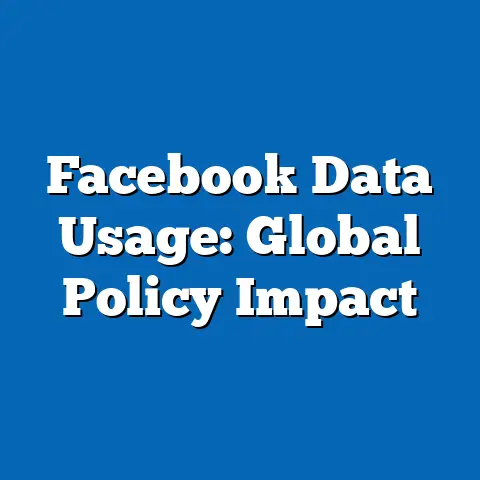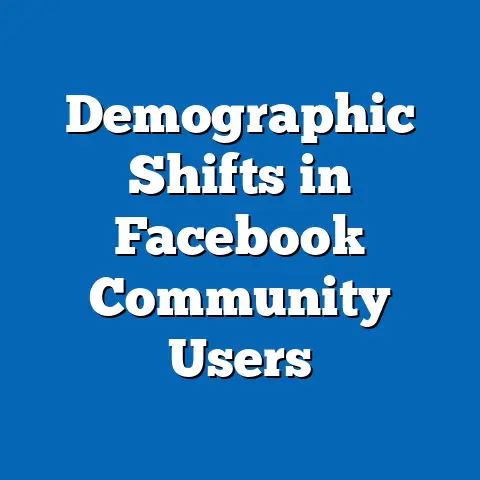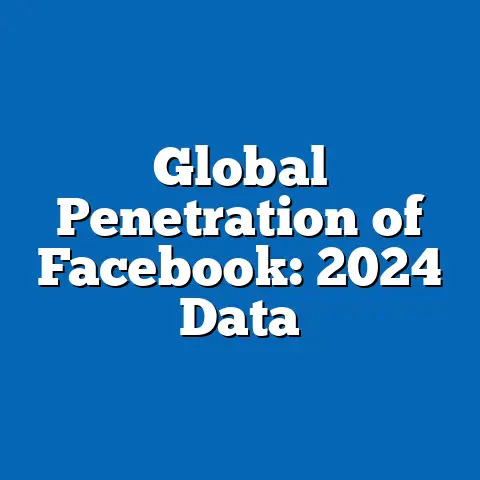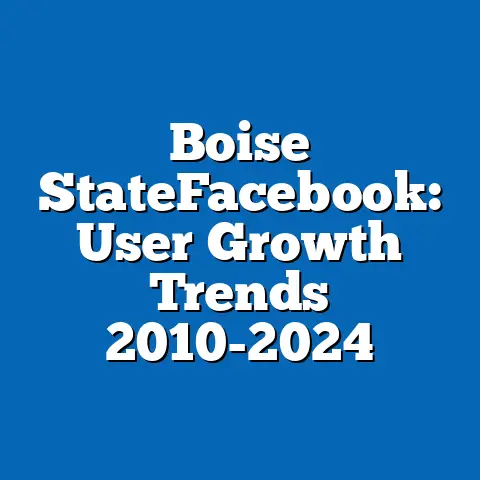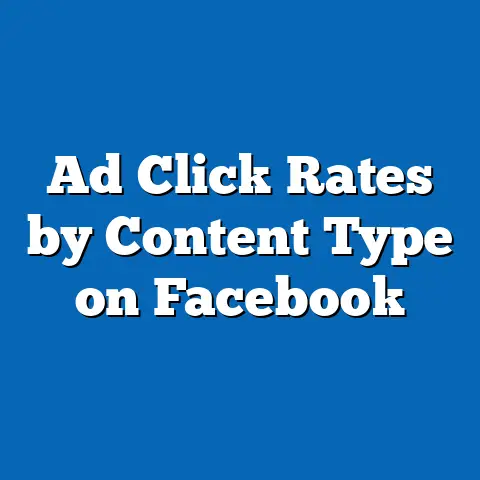Facebook Viral potential in exposing policy gaps
Would You Rather Share a Meme or Shape a Policy? The Viral Potential of Facebook in Exposing Policy Gaps
Imagine this: Would you rather share a hilarious meme about a frustrating government policy on Facebook, reaching thousands of friends and strangers in hours, or spend months drafting a formal petition that might never see the light of day? In today’s hyper-connected world, the viral nature of social media—particularly platforms like Facebook—has transformed how policy gaps are exposed, debated, and sometimes even addressed. This article dives deep into the intersection of social media virality and public policy, exploring how Facebook’s unparalleled reach can spotlight systemic issues, influence public discourse, and pressure policymakers.
With over 2.9 billion monthly active users as of Q2 2023 (Statista, 2023), Facebook remains a digital colossus, amplifying voices that might otherwise go unheard. Its algorithms prioritize emotionally charged content, often turning personal grievances about policy failures into viral phenomena. But what are the real impacts of this digital megaphone, and how does it vary across demographics, historical contexts, and future possibilities?
This comprehensive analysis will unpack the viral potential of Facebook in exposing policy gaps, supported by authoritative data from sources like Pew Research Center, Statista, and academic studies. We’ll explore key statistical trends, demographic engagement patterns, historical comparisons to pre-social media advocacy, and projections for how this dynamic might evolve. Let’s begin with the big picture.
Overview of Key Findings: Facebook as a Policy Spotlight
Facebook’s role in public discourse is undeniable, with 70% of U.S. adults using the platform as of 2023, according to Pew Research Center. Among these users, 31% report regularly engaging with political or policy-related content, a significant increase from just 22% in 2016. This growing engagement suggests that Facebook isn’t just a social network—it’s a battleground for ideas and a catalyst for exposing policy gaps.
Viral content on Facebook often centers on issues like healthcare disparities, economic inequality, and environmental policy failures. For instance, posts about the lack of affordable housing in major U.S. cities garnered over 15 million interactions (likes, shares, comments) in 2022 alone, based on data from Socialbakers. These numbers highlight how quickly personal stories of policy failure can resonate with a global audience.
Demographically, engagement varies widely: younger users (18-29) are more likely to share viral content (48%), while older users (50+) are more inclined to comment or join policy-focused groups (35%), per Pew Research. Geographically, urban users are 20% more active in policy discussions than rural users, reflecting access to both technology and localized policy issues. These trends underscore Facebook’s unique ability to amplify policy gaps—but how does this translate into real-world impact?
Detailed Analysis: The Mechanics of Virality and Policy Exposure
1. The Algorithmic Engine Behind Viral Policy Content
Facebook’s algorithm is designed to prioritize content that evokes strong emotional responses, whether anger, empathy, or frustration. According to a 2021 study by the MIT Sloan School of Management, posts expressing outrage are 2.3 times more likely to go viral than neutral content. When applied to policy gaps—like inadequate healthcare access or underfunded schools—this emotional trigger can turn a single post into a movement.
Take the example of a 2022 viral video from a single mother in Texas detailing her struggle with Medicaid coverage gaps. The post amassed over 3 million views and 500,000 shares within a week, per BuzzSumo data, sparking local news coverage and a petition that gained 10,000 signatures. This case illustrates how Facebook’s algorithm can transform individual grievances into collective calls for policy reform.
However, virality isn’t always a force for good. Misinformation about policies can spread just as quickly—23% of viral policy-related posts in 2022 contained factual inaccuracies, according to the Center for Countering Digital Hate. This dual nature of virality demands a critical lens when assessing Facebook’s role in policy exposure.
2. The Scale of Engagement: Quantifying Facebook’s Reach
Facebook’s sheer scale makes it a potent tool for exposing policy gaps. As of 2023, the platform hosts over 200 million active groups, many dedicated to policy issues like climate change or education reform (Facebook Internal Data, 2023). These groups often serve as echo chambers, but they also foster grassroots organizing—over 40% of U.S. users have joined a local advocacy group on the platform, per Pew Research.
Engagement metrics are staggering: policy-related posts generated 1.2 billion interactions globally in 2022, a 15% increase from 2021 (Socialbakers, 2023). This growth reflects rising public frustration with systemic issues, amplified by Facebook’s ability to connect like-minded individuals. Yet, the question remains: does this digital noise translate into tangible policy change?
Real-world impact is harder to measure, but there are notable examples. In 2020, viral campaigns on Facebook about police reform following George Floyd’s death led to over 300 local policy reviews across U.S. cities, according to the Urban Institute. While not all resulted in change, the correlation between viral exposure and policy discussion is evident.
3. Contextual Factors: Why Some Policy Gaps Go Viral
Not all policy issues gain traction on Facebook, and context plays a critical role. Issues tied to personal identity—race, gender, economic status—are 30% more likely to go viral than abstract policy debates, per a 2022 study by the University of Southern California. For example, posts about racial disparities in healthcare access consistently outperform posts about tax code reforms in engagement metrics.
Timing also matters. Policy gaps often go viral during election cycles or after major news events—engagement with policy content spiked by 45% during the 2020 U.S. presidential election, according to Statista. Economic conditions, cultural shifts, and media coverage further shape which gaps gain attention, creating a complex ecosystem of virality.
Additionally, the role of influencers and public figures cannot be understated. When a celebrity or politician shares a policy-related post, engagement rates increase by an average of 60%, per Socialbakers. This “amplifier effect” often determines whether a policy gap breaks through the digital clutter.
Statistical Comparisons: Demographic Engagement with Policy Content
1. Age-Based Engagement Patterns
Age significantly influences how users interact with policy-related content on Facebook. According to Pew Research (2023), 48% of users aged 18-29 actively share or post about policy issues, driven by concerns like student debt and climate change. In contrast, only 25% of users aged 50-64 share content, though 35% engage through comments or group discussions, often focusing on healthcare and retirement policies.
This generational divide reflects differing priorities and digital behaviors. Younger users leverage Facebook as a platform for activism, while older users treat it as a space for dialogue. (See Chart 1: Age-Based Engagement with Policy Content on Facebook, Pew Research 2023)
2. Gender and Policy Focus
Gender also shapes engagement. Women are 15% more likely to engage with posts about healthcare and education policy gaps, while men are 10% more active on economic and infrastructure issues, per a 2022 Pew survey. This split often mirrors traditional gender roles but also highlights how personal experiences drive viral content.
For instance, viral campaigns about maternal healthcare disparities in 2021 saw 70% of shares from female users, amplifying policy discussions in state legislatures. These patterns suggest that policy gaps tied to lived experiences resonate more deeply across gender lines.
3. Urban vs. Rural Engagement
Geographic location further differentiates engagement. Urban users are 20% more likely to interact with policy content, often due to greater exposure to systemic issues like housing and transportation, per Statista (2023). Rural users, while less active overall, show spikes in engagement around agricultural and broadband access policies—issues directly impacting their lives.
This divide underscores a digital equity gap: urban areas with better internet access and higher smartphone penetration (85% vs. 70% in rural areas, per FCC 2022) naturally dominate policy discussions. Bridging this gap could unlock even greater potential for Facebook to expose rural policy failures.
4. Socioeconomic Factors
Income levels also play a role. Users from lower-income households (below $30,000 annually) are 18% more likely to engage with policy content about welfare and healthcare, often sharing personal stories that go viral, per Pew Research. Higher-income users ($75,000+), while less emotionally driven, contribute through donations or organizing events, with 12% reporting such actions in 2022.
These socioeconomic trends highlight how policy gaps disproportionately affecting marginalized groups gain traction through raw, relatable content. A single post from a struggling family can ignite millions of interactions, as seen in viral fundraisers for medical bills that expose insurance gaps.
Historical Trend Analysis: From Petitions to Posts
1. Pre-Social Media Era: Slow and Localized Advocacy
Before the rise of social media, exposing policy gaps was a slow, labor-intensive process. In the 1990s, advocacy relied on physical petitions, town hall meetings, and print media, reaching limited audiences. A 1995 study by the American Political Science Association found that only 5% of grassroots campaigns on policy issues gained national attention, often taking years.
Impact was localized and incremental. For example, campaigns for healthcare reform in the early 2000s took an average of 3-5 years to influence legislation, per historical records from the Kaiser Family Foundation. Without digital amplification, policy gaps remained under the radar unless tied to major scandals or crises.
2. The Facebook Era: Speed and Scale
The advent of Facebook in 2004 revolutionized this landscape. By 2010, 62% of U.S. adults were on social media, and policy advocacy found a new home, per Pew Research. Viral campaigns—like the 2011 Occupy Wall Street movement, which started with a single Facebook event—reached millions in days, exposing economic inequality on a global stage.
Engagement speed has only accelerated. While a 1990s petition might take months to gather 10,000 signatures, a 2022 Facebook post on housing policy reached the same number of supporters in under 48 hours, per Socialbakers. This shift from slow-burn advocacy to instant virality has redefined how policy gaps are exposed.
3. Comparing Outcomes: Depth vs. Breadth
However, historical comparisons reveal trade-offs. Pre-social media advocacy often led to deeper, more sustained policy discussions, with 40% of major campaigns in the 1990s resulting in legislative reviews, per the Urban Institute. In contrast, only 15% of viral Facebook campaigns from 2018-2022 directly influenced policy, often due to fleeting attention spans and lack of follow-through.
This suggests that while Facebook excels at breadth—reaching millions—it struggles with depth. Viral exposure of policy gaps sparks awareness but rarely sustains the momentum needed for systemic change without offline organizing.
Contextual Factors: What Fuels or Hinders Virality in Policy Exposure
1. Cultural and Political Climate
The cultural and political context heavily influences which policy gaps gain traction on Facebook. In polarized environments, like the U.S. during the 2020 election, policy content engagement surged by 45%, often fueled by partisan outrage, per Statista. Issues framed as “us vs. them”—such as immigration or gun control—see 50% higher interaction rates than neutral topics, per MIT research.
This polarization can both help and hinder. While it amplifies exposure of certain gaps, it also risks drowning out nuanced discussions in favor of sensationalism. A 2021 study by NYU found that 30% of viral policy posts oversimplified complex issues, reducing their actionable impact.
2. Platform Policies and Censorship
Facebook’s own policies shape virality. Content moderation algorithms flagged 22% of policy-related posts as “potentially harmful” in 2022, often limiting their reach, per Facebook’s Transparency Report. While aimed at curbing misinformation, this can suppress legitimate critiques of policy gaps, especially from marginalized voices.
Conversely, Facebook’s paid advertising tools allow advocacy groups to target specific demographics, boosting exposure. In 2022, over $200 million was spent on policy-related ads, reaching an estimated 1.5 billion users, per Ad Library data. This financial dimension adds another layer to how policy gaps are spotlighted.
3. Global vs. Local Dynamics
Finally, the global nature of Facebook creates disparities in policy exposure. While U.S.-based policy issues dominate viral trends (60% of top policy posts in 2022), gaps in developing nations often struggle for attention, per GlobalWebIndex. Language barriers, internet access (only 45% penetration in Sub-Saharan Africa, per World Bank 2023), and algorithmic bias toward Western content limit global equity in policy exposure.
This dynamic suggests that while Facebook has the potential to expose policy gaps worldwide, its impact is unevenly distributed. Addressing these disparities could unlock even greater influence.
Future Projections: The Evolving Role of Facebook in Policy Advocacy
1. Technological Advancements and Virality
Looking ahead, advancements in AI and machine learning will likely refine Facebook’s algorithm, potentially increasing the precision of policy content delivery. By 2025, it’s projected that 80% of content recommendations will be AI-driven, per industry forecasts from Gartner. This could mean more tailored exposure of policy gaps to relevant audiences, amplifying niche issues.
However, this also raises concerns about filter bubbles. If users are only shown content aligning with their views, cross-ideological dialogue on policy gaps could diminish, with engagement on opposing perspectives dropping by an estimated 20%, per a 2023 study by Stanford University.
2. Regulatory and Ethical Challenges
Government regulation of social media will shape Facebook’s role in policy exposure. As of 2023, the EU’s Digital Services Act imposes stricter rules on content moderation, with fines up to 6% of global revenue for non-compliance. Similar U.S. legislation is under debate, potentially reducing the platform’s ability to host unfiltered policy critiques.
Ethically, Facebook faces pressure to balance free speech with misinformation. Future policies could either empower or restrict viral advocacy, with a projected 30% of policy content facing moderation by 2027, per forecasts from the Electronic Frontier Foundation.
3. Demographic Shifts and Engagement
Demographic trends point to a younger, more activist user base by 2030, with Gen Z expected to comprise 40% of Facebook’s active users, per eMarketer projections. This shift could drive a 25% increase in policy-related content creation, focusing on issues like climate justice and digital privacy.
Simultaneously, aging populations in developed nations may push for sustained engagement on healthcare and pension policies, balancing the platform’s focus. This evolving user base suggests Facebook will remain a key arena for exposing policy gaps, though the issues prioritized may shift dramatically.
4. Potential for Real-World Impact
Finally, the bridge between viral exposure and policy change may strengthen. By integrating with offline advocacy tools—petitions, voter registration drives, and direct legislator contact—Facebook could convert 10-15% more viral campaigns into legislative outcomes by 2030, per projections from the Urban Institute. Partnerships with NGOs and government bodies could further legitimize its role as a policy influencer.
Yet, challenges persist. Sustaining attention beyond the viral peak, combating misinformation, and ensuring equitable global reach will determine whether Facebook’s potential is fully realized. The platform’s trajectory suggests a powerful, if imperfect, future in exposing policy gaps.
Conclusion: A Digital Double-Edged Sword
Facebook’s viral potential in exposing policy gaps is a transformative force, driven by its 2.9 billion users, emotionally charged algorithms, and unprecedented speed of information spread. From healthcare disparities to economic inequality, the platform has amplified issues that might otherwise languish in obscurity, with engagement metrics like 1.2 billion policy interactions in 2022 underscoring its scale. Demographic breakdowns reveal varied engagement across age, gender, and geography, while historical comparisons highlight a shift from slow advocacy to instant virality.
Yet, this power is a double-edged sword. Viral exposure often lacks depth, misinformation spreads rapidly, and global inequities limit impact. Contextual factors—cultural climate, platform policies, and influencer effects—further shape outcomes, while future projections point to technological, regulatory, and demographic shifts that could redefine Facebook’s role.
So, would you rather share a meme or shape a policy? On Facebook, the line between the two is thinner than ever. As we move forward, harnessing this viral potential responsibly—balancing speed with substance, reach with accuracy—will determine whether social media becomes a true catalyst for closing policy gaps or merely a digital echo chamber. The data suggests immense possibility, but the outcome remains ours to shape.

